Northern White Cedar Wood
- September 8, 2023
- 0 comment

Northern White Cedar is a small to medium-sized tree native to North America. It is known for its light-colored, almost white wood, which can have a slight pink or yellowish hue. This wood species is highly valued for its natural resistance to decay and insects, making it a preferred choice for various outdoor and indoor applications. It’s commonly found in the northern regions of North America, particularly in wetland areas.
Texture
Northern White Cedar has a fine, straight grain with a smooth and even texture. The wood is lightweight and soft to the touch, giving it a distinct tactile quality that woodworkers appreciate.

Bark
The bark of Northern White Cedar is thin and fibrous, often peeling off in narrow, vertical strips. It ranges in color from grayish-brown to reddish-brown and has a fragrant aroma when crushed.

Furniture
Northern White Cedar is frequently used in crafting rustic-style furniture due to its lightweight nature and durability. Common furniture items made from this wood include chairs, tables, benches, and log furniture, offering a natural and timeless aesthetic.

Weapon
While not traditionally used for weapons, Northern White Cedar’s straight and flexible grain makes it suitable for crafting bows and arrows, particularly by indigenous cultures in North America.
Firewood
Northern White Cedar is not a popular choice for firewood because it’s highly valued for other applications, and it burns quickly. However, it can be used for kindling or in campfires.

Construction
Northern White Cedar is utilized in various construction applications, including siding, shingles, and exterior trim. Its natural resistance to decay and insects makes it an attractive choice for structures exposed to the elements.

Plywood
Northern White Cedar is sometimes used in the production of plywood, where thin veneer sheets are layered and bonded together. This plywood is used in a variety of construction and woodworking projects.
Board
Northern White Cedar boards are commonly used in construction for purposes like siding, paneling, and fencing. The wood’s natural decay resistance and fine grain make it suitable for exterior use.

Railroad Cross Ties
Northern White Cedar is not commonly used for railroad cross ties due to its smaller size and softer wood compared to hardwoods, which are preferred for their greater strength and durability in this application.
Pallet
Northern White Cedar is not typically used for pallet construction due to its lightweight and softwood characteristics. Hardwoods are generally preferred for pallets to withstand heavy loads.
Fencing
Northern White Cedar is a sought-after choice for fencing due to its natural resistance to decay and insects. It’s used to create durable and visually appealing fences for both residential and commercial properties.

Wood Decking
Northern White Cedar is used for wood decking, known for its light color and natural resistance to decay. It provides an aesthetically pleasing and durable surface for outdoor decks, although other hardwoods are more common choices.

Live Edge Siding
Live edge siding made from Northern White Cedar preserves the tree’s natural contours and adds a rustic and visually striking element to exterior walls.

Beams
Northern White Cedar beams are employed in construction for structural support and decorative purposes. They contribute a touch of natural elegance while providing structural strength to buildings and architectural designs.

FAQs
- Why is Northern White Cedar wood almost white in color?
Northern White Cedar wood is nearly white due to its low concentration of pigments and the absence of dark-colored heartwood. This pale appearance gives it a distinct and light aesthetic. - What makes Northern White Cedar resistant to decay and insects?
Northern White Cedar’s natural resistance to decay and insects is attributed to the presence of natural oils and compounds in the wood, which deter pests and inhibit rotting even when the wood is in contact with soil or moisture. - Is Northern White Cedar wood suitable for outdoor use?
Yes, Northern White Cedar is an excellent choice for outdoor applications because of its natural durability. It is commonly used for siding, shingles, fencing, and decking, as it can withstand exposure to the elements. - Can Northern White Cedar be used for log homes and cabins?
Yes, Northern White Cedar is a popular choice for log homes and cabins due to its durability and rustic appearance. Its lightweight properties also make it suitable for log construction. - Is Northern White Cedar used in traditional or historic buildings?
Yes, Northern White Cedar has historical significance and has been used in traditional and historic buildings, particularly in North America’s early settlements and indigenous structures. - What is the unique scent associated with Northern White Cedar?
Northern White Cedar emits a pleasant aromatic fragrance, often described as “cedar-like” or “woodsy.” This scent is a natural characteristic of the wood and is enjoyed in various applications like cedar chests and closets. - Can Northern White Cedar be used for crafting traditional wooden boats?
Yes, Northern White Cedar is a preferred wood for building traditional wooden canoes and boats due to its lightweight nature, buoyancy, and natural resistance to decay. - Is Northern White Cedar harvested sustainably?
Sustainable forestry practices are often employed in harvesting Northern White Cedar to ensure its long-term availability. This includes replanting and managing forests to minimize environmental impact. - What types of wildlife benefit from Northern White Cedar ecosystems?
Northern White Cedar ecosystems provide habitat and food for a variety of wildlife, including deer, songbirds, and small mammals, making it ecologically important in some regions. - Can Northern White Cedar wood be stained or finished?
Yes, Northern White Cedar wood can be stained or finished to enhance its appearance or protect it from weathering. However, many people appreciate its natural aging process, which turns the wood a silvery gray over time.
As we conclude our exploration of the remarkable Northern White Cedar, remember that this resilient wood, with its pale beauty and natural resistance, has left an indelible mark on various aspects of human life, from construction to craftsmanship. Whether it’s gracing your home as rustic log cabin walls, adding charm to your garden as a sturdy fence, or imparting its fragrant touch to your closet, Northern White Cedar’s versatility and enduring qualities make it a wood to be celebrated. Its presence in our lives, with its aromatic allure and timeless appeal, serves as a reminder of the remarkable synergy between nature and human ingenuity.


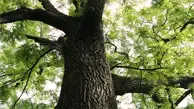
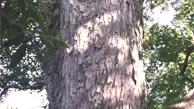
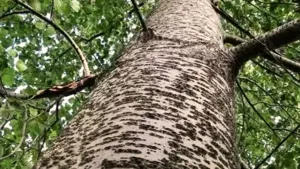
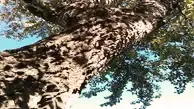
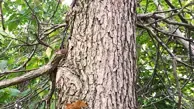



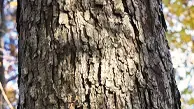

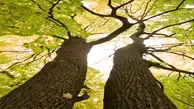

Leave your comment